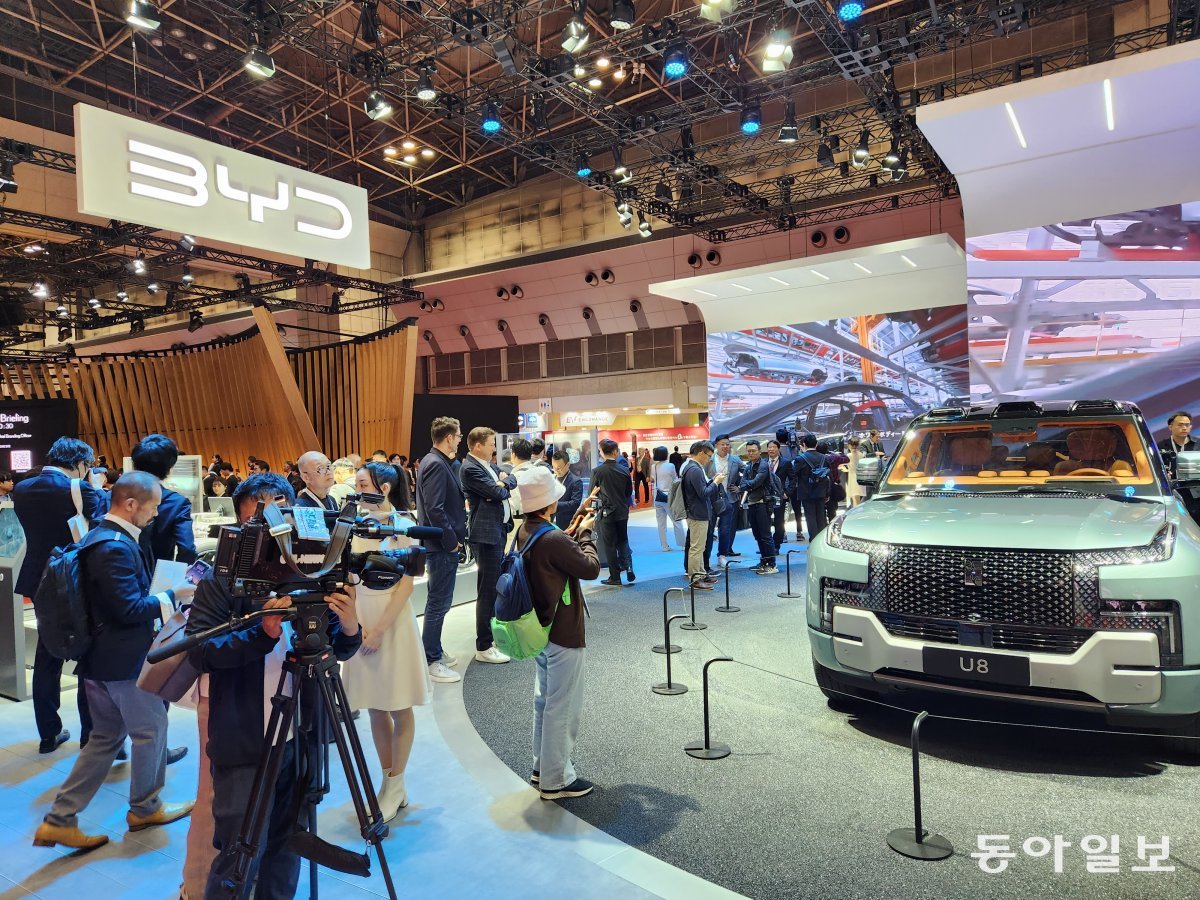Japan Mobility Show revived after 4 years
The Tokyo Motor Show, one of the world’s top five automobile exhibitions, was revived after four years, changing its name to the ‘Japan Mobility Show’. The exhibition, which was suspended for three years following the outbreak of the novel coronavirus infection (Corona 19) at the end of 2019, opened on the 25th with a press preview at Tokyo Big Sight.
Led by Toyota, the world’s largest automobile company, Japanese automobile companies such as Honda and Nissan came together to showcase a variety of electric vehicles. China’s BYD, which surpassed Tesla of the United States and became the world’s largest electric vehicle manufacturer last year, also appeared for the first time, making Japanese companies nervous. Japanese companies released electric vehicle concept models with no definite date for production, but BYD displayed products sold in the global market, making the gap between the two countries’ electric vehicles realistic.
 On the 25th, the ‘Japan Mobility Show’, one of the world’s top five motor shows, was held at Tokyo Big Sight for the first time in four years since 2019. Japanese automakers, which lagged behind in the global electric vehicle competition, introduced a variety of electric vehicle models at this motor show. Toyota unveiled the ‘Kayoibako’ (moving box), which can be used more space by changing the structure depending on the user’s needs. Tokyo =
On the 25th, the ‘Japan Mobility Show’, one of the world’s top five motor shows, was held at Tokyo Big Sight for the first time in four years since 2019. Japanese automakers, which lagged behind in the global electric vehicle competition, introduced a variety of electric vehicle models at this motor show. Toyota unveiled the ‘Kayoibako’ (moving box), which can be used more space by changing the structure depending on the user’s needs. Tokyo = Japanese automakers, which have been targeting the global market with hybrid vehicles since the late 1990s, have introduced a large number of new electric vehicle models as if they had made a promise. The company’s determination to break away from its position as a latecomer in the global electric vehicle competition was evident.
Toyota, which launched its first electric car last year, declared its intention to become an electric car company by releasing several electric car concept models at once. The company unveiled ‘Kayoi Baco’, a purpose-built vehicle (PBV) that can freely utilize the interior space, ‘IMV 0’, a truck in which customers participate in the production, and ‘FT-3e’, a sports utility vehicle (SUV). Lexus first introduced the ‘LF-ZC’, scheduled for production in 2026, which can run 1,000 km with a 100% charge in 30 minutes.
Toyota Motor Company President Koji Sato, who was the first of the participating companies to introduce the car, said, “Creating the car you want and your own is the future of next-generation electric vehicles and software-driven vehicles (SDVs),” and added, “We will continue to provide a variety of options.” “This is the strategy Toyota is aiming for,” he said.
Honda, the second largest automobile company in Japan, has launched a driverless electric taxi jointly developed with General Motors (GM) of the United States. Honda President Toshihiro Mibe expressed confidence, saying, “You can spend such a comfortable time that you forget you are on the move.” Nissan released the ‘Hyper Tourer’ electric minivan equipped with an all-solid-state battery, and Suzuki introduced the eVX, a small electric vehicle to be sold in India and Europe.
 China’s BYD introduced ‘U8’, a large amphibious sports utility vehicle (SUV). Tokyo =
China’s BYD introduced ‘U8’, a large amphibious sports utility vehicle (SUV). Tokyo = Although the electric vehicles prepared were nearly comprehensive, the limitations of Japanese electric vehicles were also revealed. Most electric vehicles released by companies such as Toyota and Honda were concept models with a strong experimental nature.
Confidence has been expressed that the all-solid-state battery, which is a ‘dream battery’ that significantly reduces charging time and increases driving range, will lead the global market when fully commercialized, but there is concern that the reorganization of the automobile (electric vehicle) market may already be over before that dream is realized. will be. The Nippon Keizai Shimbun pointed out, “Japanese electric vehicles will not be introduced to the global market in earnest until 2025, but the global market competitive structure is likely to change in the meantime.”
BYD unveiled the U8, a large SUV unveiled last month to compete with the Mercedes-Benz G-Wagen and Land Rover Range Rover, and also unveiled the ‘Sil’, an electric vehicle with a range of 555km that will be released in Japan next year. BYD Japan President Liu Xueyang asserted, “The new future of electric vehicles in Japan begins here.”
In Korea, Hyundai Mobis participated and began winning orders by offering key components and software used in electric vehicles such as the IONIQ 5 to local companies.
Tokyo =
Source: Donga
Mark Jones is a world traveler and journalist for News Rebeat. With a curious mind and a love of adventure, Mark brings a unique perspective to the latest global events and provides in-depth and thought-provoking coverage of the world at large.